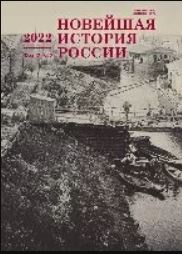Кластерный анализ как средство выявления типов демографического поведения (русское сельское население, европейская часть России, начало XX-XXIв.)
Cluster Analysis as a Means of Identifying Types of Demographic Characteristics (Russian Rural Population, European Part of Russia, Early 20th to Early 21st Century)
Author(s): D. S. Zhukov, V. V. KanishchevSubject(s): Sociology, Recent History (1900 till today), Health and medicine and law, Demography and human biology, Rural and urban sociology
Published by: Издательство Исторического факультета СПбГУ
Keywords: rural population; historical demography; natural population growth; cluster analysis;
Summary/Abstract: The object of study is the demographic characteristics of the Russian rural population of the European part of Russia (at the level of individual governorates, regions, and republics) from the beginning of the twentieth century to the beginning of the twenty-first century. These data are analyzed in the context of general demographic trends. The goal is to identify regions with similar demographic indicators during several chronological periods (1902, 1940, 2002, 2020) and to observe the transformation of demographic characteristics in different periods of history and in different regions of European Russia. This provides the necessary material for making assumptions about the connection between demographic types and natural-geographical, economic-geographical, and ethnogeographical factors. The principal research method, multivariate cluster analysis, is a tool for identifying stable groups of typologically homogeneous objects. The clustering of regions was carried out on the basis of three key demographic indicators: fertility, mortality, and natural growth. The authors came to the conclusion that, as early as the beginning of the twentieth century, Russian agrarian society was already at different demographic stages, evolving from a traditional to a modernized society. In the middle of the century, discrepancies in the rates of demographic transition became noticeable, manifested in some conventional “dividing” lines such as the ones between Russian oblasts and some national republics; the ones between agro-industrial and industrial-agrarian regions; the ones between southern and northern territories; and, finally, the ones between the regions and republics close to and distant from Moscow. The entwinement of these lines gave rise to various cluster groupings and, apparently, led to some consequent variability in the types of demographic characteristics in different regions, which is also recorded at the beginning of the twentieth century. The authors also pay attention to types of “demographic responses” of different regions to the coronavirus pandemic.
Journal: Новейшая история России
- Issue Year: 12/2022
- Issue No: 39
- Page Range: 454-476
- Page Count: 23
- Language: Russian

